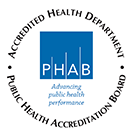
The tail end of summer is a perfect chance for us to spend some time sharing the yumminess and healthiness of whole grains - especially since it is Whole Grains Month!
They are not only delicious, but also play an important role in our health by providing us with many essential nutrients. Eating whole grains can help reduce heart disease and diabetes, as well as promote a healthy bowel. Whole grains have also been shown to help maintain a healthy weight, improve digestion, lower your risk of a stroke and some cancers. Aim to have at least half of the grains in your diet be whole grains.
Whole grains provide our bodies with:
- Fiber
- Iron
- Zinc
- Magnesium
- Calcium
- Vitamin B
- Potassium
- Vitamin B
So what’s the difference between “regular” grains and whole grains?
Whole grains include the entire seed of a plant. “Regular” grains are actually called refined grains. These grains have been processed by milling to remove the bran and germ (the term “germ” here refers to a part of the seed, not a yucky critter that could make you sick). Examples of refined grains include: white bread, white rice, white flour pasta.
It is recommended that adults eat 3 servings a day and kids eat 2 servings of whole grains. So how exactly do we incorporate them into our meals? Take a look at this list of whole wheat examples to see if there are any swaps you could try!
Examples of whole grains include:
- Wheat
- Rice (brown… just make sure to add a little extra liquid when preparing)
- Whole Oats
- Barley (when cooked, has a texture similar to pasta and rice)
- Quinoa
- Sorghum (cause be used in place of rice and has a sweet, nutty flavor)
- Rye (look for this ingredient in your bread selections!)
- Whole wheat bread & buns, pasta, tortillas, pita, or crackers
- Popcorn
- Farro (very similar to rice, but has a bit of a nutty flavor)
Servings could include: 1 slice of whole grain bread, ½ of a whole-grain English muffin, 1/3 cup of brown rice, quinoa or other cooked grain, or 1/3 cup of whole-wheat pasta.
How to recognize whole grains at the store:
- Look at the labels. The first or second ingredient should be whole wheat, or one of the grains listed above.
- Be cautious of ingredients that are listed as “refined” (which, if you remember from earlier, is white bread, white flour, and white rice) or enriched grains as the first or second ingredient in the product label. Always try to go for the products that have “whole grains” listed right there on the label.
- Do you see the word “whole” on the package? If so, read the label to see where it is. Even better, locate the Whole Grain Stamp on packaging.
- Making swaps can be tricky in the beginning. If you (or your kids) love white bread, look for white whole-wheat bread. It is similar in the taste and texture to white bread but has the nutritional benefits of whole-wheat bread!
- Read cereal labels—there are cereals that are whole grain, like shredded wheat or whole-wheat bran flakes.
Enjoy whole grains in your meals:
- If your kids will only eat cereal that is sugary or doesn’t have whole grains, give them less cereal and add a piece of whole wheat toast with peanut butter.
- Substitute whole wheat bread for white bread, whole wheat English muffins and bagels instead of white English muffins and bagels, and make muffins with whole grains, like oatmeal.
- Ditch the white rice and use brown rice, quinoa, wild rice, barley, or bulgur instead. You will end up with a meal that has A LOT more flavor.
- Add brown rice, quinoa, or other whole grains to soups.
Yummy whole grain recipes:
One easy switch is to substitute some of the all-purpose white flour in a recipe with whole wheat flour.
These recipes from Oldways Whole Grains Council look easy and delicious.
The Taste of Home recipes would be easy to adapt to what you have in your pantry, like jarred pasta sauce, canned veggies, and different whole grains.
Use these recipes from My Recipes to help you with ideas for your kids.
Fun and easy kids’ recipes from Good in every Grain.
This information from My Plate might be very helpful to understand the importance of grains. While you’re on the website, search for recipe ideas!
Interested in learning more about whole grains or how to make some simple swaps in your daily diet? Meet with our Nutrition Counselor by calling 740-399-8008.
Information for this blog article obtained from the Inter Tribal Council or Arizona and Good Grains.



